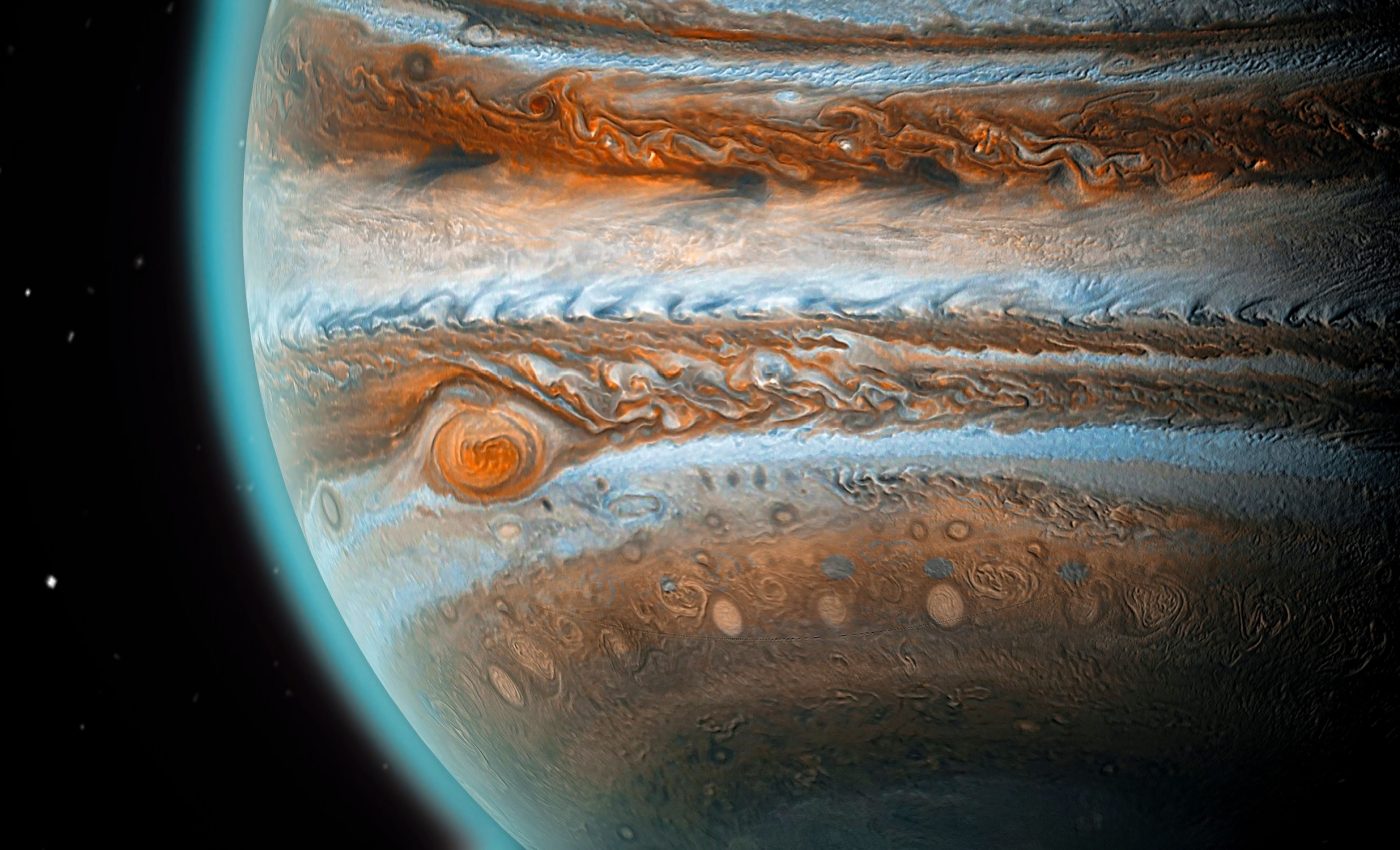
Secrets of Jupiter's radiation revealed by Juno
NASA’s Juno mission has guided the development of the first comprehensive 3D radiation map of the Jupiter system.
Jupiter’s radiation environment is one of the most intense in the solar system. This powerful radiation is primarily due to Jupiter’s strong magnetic field, which is about 20,000 times stronger than Earth’s.
The radiation belts around Jupiter are filled with high-energy particles, such as electrons, protons, and ions, which are trapped by the planet’s magnetic field.
Insights from the Juno spacecraft
Scientists calculated the intensity of high-energy particles near Europa’s orbit and examined how the radiation environment is shaped by the smaller moons near Jupiter’s rings. This technique has unveiled new insights into one of the solar system’s most hostile environments.
The mission’s success is driven by data collected from Juno’s Advanced Stellar Compass (ASC). This star tracker camera system was designed and built by the Technical University of Denmark.
The work also relied on data collected by the Stellar Reference Unit (SRU), a camera on the spacecraft that was built by Leonardo SpA in Florence, Italy.
“On Juno, we try to innovate new ways to use our sensors to learn about nature, and we have used many of our science instruments in ways they were not designed for,” said Scott Bolton, Juno principal investigator from the Southwest Research Institute in San Antonio.
“This is the first detailed radiation map of the region at these higher energies, which is a major step in understanding how Jupiter’s radiation environment works.”
“Counting fireflies” to measure Jupiter radiation
Juno’s ASC, consisting of four star cameras mounted on the spacecraft’s magnetometer boom, plays a crucial role in determining the spacecraft’s orientation in space.
Originally designed for navigation, these cameras have proven to be valuable detectors of high-energy particle fluxes in Jupiter’s magnetosphere.
“Every quarter-second, the ASC takes an image of the stars,” said John Leif Jørgensen, a scientist from the Technical University of Denmark.
“Very energetic electrons that penetrate its shielding leave a telltale signature in our images that looks like the trail of a firefly. The instrument is programmed to count the number of these fireflies, giving us an accurate calculation of the amount of radiation.”
The ASC data has revealed that very high-energy radiation near Europa’s orbit is more abundant than previously thought, offering new insights into the radiation dynamics within Jupiter’s magnetosphere.
Beyond Jupiter radiation detection
Like the ASC, the Stellar Reference Unit has also been utilized as a radiation detector and a low-light imager, providing crucial data on how Jupiter’s radiation environment interacts with its moons and rings.
The SRU has captured rare low-light images of Jupiter’s rings from Juno’s unique vantage point, shedding light on the mysterious formation of these rings.
“There is still a lot of mystery about how Jupiter’s rings were formed, and very few images have been collected by prior spacecraft,” said Heidi Becker, co-lead investigator for the SRU and a scientist at NASA’s Jet Propulsion Laboratory in Southern California.
“These images allow us to learn more precisely where the ring moons are currently located and see the distribution of dust relative to their distance from Jupiter.”
Radiation challenges of Jupiter missions
The intense radiation belts surrounding Jupiter pose a significant threat to spacecraft electronics.
The data gathered by Juno’s ASC and SRU will be instrumental in designing protective measures for future missions, such as the upcoming Europa Clipper mission.
By providing a comprehensive understanding of Jupiter’s radiation belts, Juno is paving the way for safer and more effective explorations of the Jovian system.
As we continue our exploration of space, such innovative applications of existing technology will undoubtedly unlock more secrets of our universe.
Implications for human exploration
The insights gained from mapping Jupiter radiation have far-reaching implications, particularly for the future of human space exploration.
As space agencies like NASA consider crewed missions to the outer planets or their moons, understanding the radiation hazards in these environments is crucial.
The data from Juno’s ASC and SRU will help in designing more robust shielding for spacecraft and habitats, ensuring the safety of astronauts venturing into these extreme conditions.
By shedding light on Jupiter’s radiation belts, Juno not only advances our knowledge of the gas giant but also lays the groundwork for humanity’s next steps into deep space.
—–
Like what you read? Subscribe to our newsletter for engaging articles, exclusive content, and the latest updates.
Check us out on EarthSnap, a free app brought to you by Eric Ralls and Earth.com.
—–













